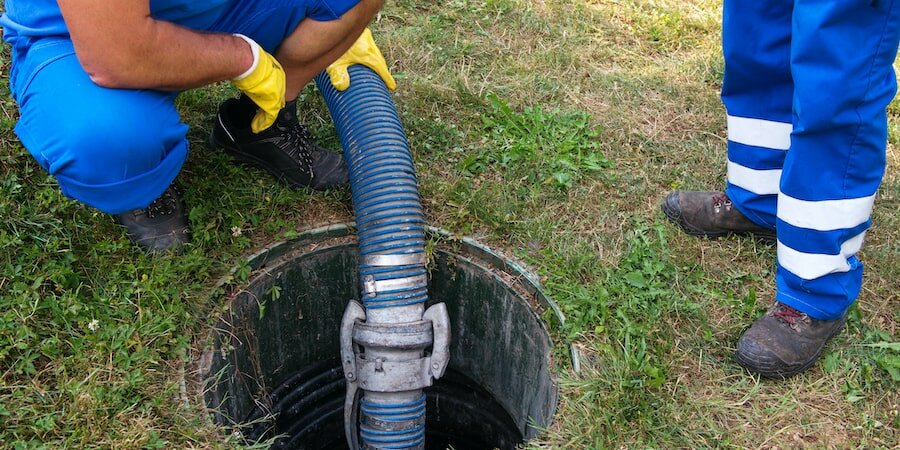Getting your septic tank pumped regularly is crucial to keep your system functioning properly. But once the pumping service finishes, what should you do next?
This comprehensive guide covers everything you need to know about caring for your septic tank after it’s been pumped:
- Get on a Regular Pumping Schedule
- Continue Using Water Efficiently
- Only Flush Proper Materials
- Avoid Harsh Chemicals
- Locate All Septic System Parts
- Inspect for Any Issues
- Do You Need Additives?
- Follow Ongoing Maintenance Tips
- When to Call a Professional
- FAQs
Get on a Regular Pumping Schedule
The first step after getting your tank pumped is to schedule the next pumping. Maintaining a regular schedule prevents excessive sludge buildup.
Typical pumping frequencies:
- 1000 gallon tank – Every 2-3 years
- 1250 gallon tank – Every 3-4 years
- 1500+ gallon tank – Every 4-5 years
The interval depends on tank size, household size, and water usage. Discuss an optimal schedule with your septic professional.
Continue Using Water Efficiently
Don’t increase your water use just because the tank was just pumped. Continue conserving water through actions like:
- Fixing any leaky faucets and toilets.
- Taking shorter showers.
- Running full loads of laundry and dishes.
Using water moderately reduces strain on your septic system.
Only Flush Proper Materials
Avoid flushing anything besides human waste and toilet paper into your septic system. Things like:
- Paper towels, tissues
- Feminine products
- Dental floss
- Diapers
These can rapidly clog pipes and disrupt the biological digestion in the tank.
Avoid Harsh Chemicals
Harsh cleaners, chemicals, and additives can damage the beneficial bacteria that break down waste in the septic tank. Avoid pouring items like:
- Bleach, drain cleaners, acids
- Petroleum products
- Paints, solvents
- Excessive food waste
- Fats, oils, grease
Use natural cleaners when possible and limit use of garbage disposals.
Locate All Septic System Parts
Find the lids to access your septic tank and any drainage field lines. Keep a drawn map for reference.
Check these components periodically for any leaks, odd smells, or signs of damage. Report issues promptly.
Inspect for Any Issues
Verify your plumbing system is working normally after septic tank pumping.
Contact a professional if you notice:
- Slow drains or gurgling sounds
- Plumbing backups
- Sinks draining slowly
- Foul sewage odors
A camera inspection can check for pipe clogs or damage.
Do You Need Additives?
Septic additives that claim to help tank bacteria are not necessary. Simply resuming normal household wastewater flows will replenish your septic tank’s bacteria naturally within a few days.
Save your money – expensive additives provide no benefit. Just use your drains and toilets as normal.
Follow Ongoing Maintenance Tips
For optimal septic system health between pumpings:
- Inspect tank annually, pump as needed.
- Use water efficiently.
- Spread laundry loads through the week.
- Avoid flushing paper, grease, chemicals.
- Don’t use garbage disposals excessively.
- Keep vehicles off your drain field.
When to Call a Professional
Contact a septic service company if you experience:
- Sewage odors, surfacing sewage
- Slow drains or plumbing gurgling
- Needing to pump much more frequently
- Standing water or soggy soil around tank/drain field
Professionals have the equipment and expertise to thoroughly inspect your entire system and identify any issues. They can pump the tank or make repairs as needed.
FAQs
What should you not flush after septic tank pumping?
Avoid flushing anything besides toilet paper and human waste. Other items like wipes, paper towels, and feminine products can quickly clog pipes or damage your septic system.
Do septic tanks need bacteria after pumping?
No, septic tanks naturally replenish their good bacteria within a few days after pumping once regular household wastewater use resumes. Additives are not needed.
How soon after pumping can you use the septic system?
You can start using your toilets, sinks, washing machine, etc as normal immediately after pumping. This will help re-establish bacteria in the tank. Just don’t overuse water.
Can septic tanks overflow after pumping?
It’s extremely rare for a septic tank to overflow after pumping. But if you experience backups, odors, or see sewage surfacing, call a septic professional immediately for emergency repairs.
How often should you get septic tank pumped?
Get your septic tank pumped every 3-5 years. Frequent pumping prevents sludge buildup. Household size, tank size, and water use impact optimal pumping frequency.
Bottom Line
Caring for your septic tank after pumping simply involves resuming normal water use and following good maintenance habits. Schedule the next regular pumping, avoid overloading the system, and inspect periodically. With proper care, your septic system will provide years of reliable service.
